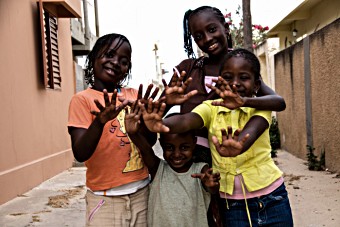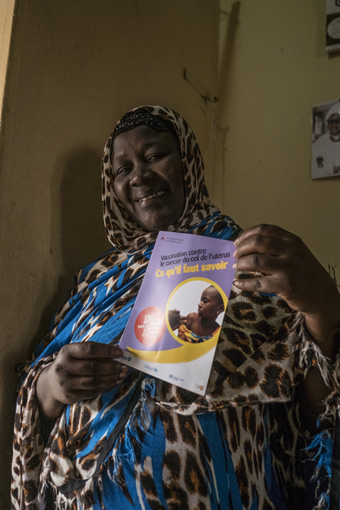
Senegalese children. Credit: GAVI/PATH/2009/Ricky Shryock.
Last year, as the UN General Assembly gathered in New York, I flew home to welcome my first grandchild into the world. It was a very special time, but I couldn’t help wondering what the world will be like when the youngest member of our family grows up.
Recent years have brought impressive progress in saving children’s lives around the world. At the same time, as global population levels soar, incidences of non-communicable diseases like cancer are skyrocketing. This World Cancer Day, young people in poorer countries face the twin threat of both infectious and non-infectious diseases as they get older.
For adolescents in particular (and there are 1.2 billion of them), the stakes are high. In this formative stage of their lives, the behaviours they begin and the experiences they endure will shape their long-term health. It is estimated that almost 60% of premature deaths among adults can be traced back to attitudes, habits or conditions that began or occurred during adolescence.
From alcohol or tobacco use and physical activity to unprotected sex and exposure to violence, young people make decisions that will last a lifetime. This is especially true in poorer countries, home to the majority of the world’s adolescents. How do we help young people with limited access to basic health make the right choices? After all, prevention is better than cure.
The answer demands the attention and collaboration of everyone working in global development.
We must start by building on what is already there. In many poorer nations (though not yet my home country India), immunisation programmes are already reaching young girls aged 8-14 with the human papillomavirus (HPV) vaccine, which protects against a major cause of cervical cancer. By using the same delivery platform, countries can broaden their ambitions to provide other critical healthcare services to adolescents.

Oumy Thioune, a school director in Meckhe, Senegal. Credit: Gavi/2017/Ricki Shryock.
Oumi Thioune, a head teacher in rural Senegal, recognises that health education is a crucial part of her job. She recently helped spread the word about her country’s HPV vaccination pilot project, and organised immunisation sessions in her school. Her reasons for engaging? “Every Senegalese woman knows how serious cervical cancer is. Everyone has heard about it.”
Oumi’s counterparts in neighbouring Togo are playing a lead role in integrating vaccination with the delivery of other health services. Education about menstrual hygiene and sanitation takes place alongside the provision of the HPV vaccine, with support of international partners like the United Nations Population Fund (UNFPA).
These kind of approaches not only represent a more holistic approach to tackling non-communicable diseases. They also help us move towards the global goal of universal health coverage.
Senegal and Togo are just two examples of evolving approaches to universal health coverage that have adolescent health at their heart, but there are many others. I hope that as organisations unite to mark World Cancer Day, and as the WHO's commission on non-communicable diseases begins its vital work, decision-makers will prioritise engagement with adolescents through multi-sectoral collaboration. It is only by working together, that we can help generations of adolescents make the healthy choices they need to achieve their dreams. And if we can do that, we will be building a healthier future for those dearest to us - our children and grandchildren.
